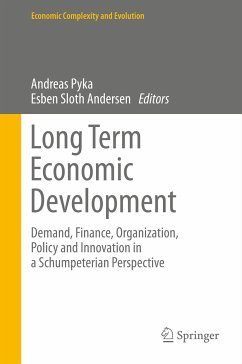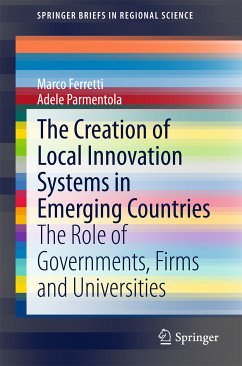
Innovation Networks in the German Laser Industry (eBook, PDF)
Evolutionary Change, Strategic Positioning, and Firm Innovativeness
Versandkostenfrei!
Sofort per Download lieferbar
40,95 €
inkl. MwSt.
Weitere Ausgaben:

PAYBACK Punkte
20 °P sammeln!
Technological innovation is fundamental to firm performance and economic prosperity. The aim of this book is to contribute to an in-depth understanding of collective innovation processes by analyzing publicly funded R&D cooperation and innovation networks in the German laser industry. Standing in a neo-Schumpeterian tradition, it employs interdisciplinary analytical concepts and draws upon a unique longitudinal dataset from the laser industry that covers more than two decades of observations. In brief, the book makes a valuable contribution by exploring how and why firm-specific R&D cooperatio...
Technological innovation is fundamental to firm performance and economic prosperity. The aim of this book is to contribute to an in-depth understanding of collective innovation processes by analyzing publicly funded R&D cooperation and innovation networks in the German laser industry. Standing in a neo-Schumpeterian tradition, it employs interdisciplinary analytical concepts and draws upon a unique longitudinal dataset from the laser industry that covers more than two decades of observations. In brief, the book makes a valuable contribution by exploring how and why firm-specific R&D cooperation activities and network positions, large-scale network patterns, and evolutionary network change processes affect the innovative performance of laser source manufacturers in Germany.
Dieser Download kann aus rechtlichen Gründen nur mit Rechnungsadresse in A, B, BG, CY, CZ, D, DK, EW, E, FIN, F, GR, HR, H, IRL, I, LT, L, LR, M, NL, PL, P, R, S, SLO, SK ausgeliefert werden.













